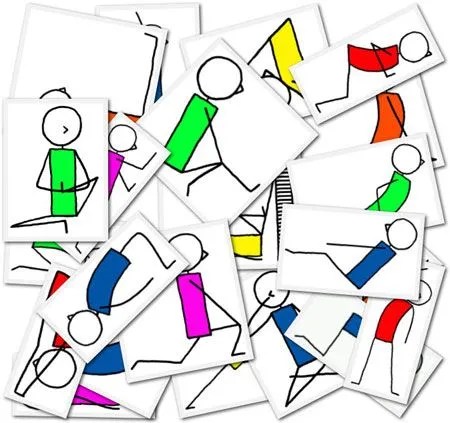Eight Limbs of Yoga: A study of much more than exercise – Dr. Christie Smirl
The writings of Patanjali proposes eight paths of yoga to attain enlightenment. These eight steps are guidelines to living a meaningful and purposeful life. It is a common mis-belief that yoga is just a form of fitness with pretzel like poses. There are actually eight divisions of yogic development and only one of them encompasses poses. Let’s take a brief look at all eight recommendations.
1. YAMAS
The first limb of yoga are yamas. Yamas are abstentions – behaviors to avoid for developing personal purity. There are five yamas: ahimsa (non-violence), satya (truthfulness), brahmacharya (control of senses), asteya (non-stealing) and aparigraha (non-covetousness).
- Ahimsa: Non-violence includes avoidance of killing, violent actions, self harm, gossip, thoughts of hate or dislike, negative self speak, frowning, mean looks, cruel gestures, harsh speech, rudeness, road rage, harsh criticisms.
- Satya: Truthfulness includes not telling lies to others or self, keeping your word and aligning actions with words and thoughts.
- Bhrahmacharya: Control of the senses and restraining from abnormal urges or unhealthy sensual indulgence helps retain energy and prana for practicing higher limbs of yoga such as dharana, dhyana, samadhi, ojas and tejas.
- Asteya: Non-stealing includes the concept of being happy with what comes to you by honest means.
- Aparigraha: Non-covetousness. The definition of covet is to longingly wish for or desire what is not yours. Being happy with what we have and not always coveting unnecessary and luxury items or more than is needed.
2. NIYAMAS
The second limb of yoga are the niyamas. Niyamas are observances – behaviors to practice for personal development. There are 5 niyamas: saucha (purity), santosha (contentment), tapas (austerity), swadhyaya (study), ishwara pranidhana (surrender).
- Saucha: This translates as purity including cleanliness of mind, body, speech and surroundings.
- Santosha: The concept of santosha encompasses contentment, striving to be content and satisfied with what one has while striving to improve.
- Tapas: Discipline to keep body fit, mind clear and pure, confront unhealthy our urges.
- Swadhyaya: Self-study and study of scriptures. Self evaluation, introspection, learning from mistakes, journaling, counseling and striving to be the best you can be. Self study or study of scriptures when mastered, leads to moksha
- Ishwara pranidhana: Surrender to the divine, to God to one’s higher consciousness. Making each action an offering to something bigger than self. Developing full trust in the universe.
3. ASANAS

Physical poses. The third limb of yoga are asanas, poses or movement series that bring many benefits.
- Develop mental discipline and confidence
- Develop physical discipline, coordination, flexibility and strength
- Purify srotas (body channels)
- Balance doshas
- Tonify dhatus
- Balance jataaragni and dhatu agni
4. PRANAYAMA

Pranayama is the fourth limb of yoga where breath control techniques are practiced. These breath control methods have numerous purposes.
- Enhance prana or life force to body and mind
- Calms and balances mind
- Balances emotions
- Lowers blood pressure and heart rate
- Balances hormones, neurotransmitters and nervous system
- Balances metabolism
- Enhances digestion
- Reduces pain
5. PRATHYAHARA

Prathyahara, the fifth limb of yoga, is the withdrawal of senses from sense objects. The practice of prathyahara involved pulling the mind away from outer world stimuli and finding silence to create a peaceful mind, reduces agitation and rajas.
6. DHARANA
Dharana means concentration. Practicing mindfulness and concentration propels us toward our higher aims. This state of mind leads to dhyana and samadhi. Lack of concentration makes our life goals harder to attain.
7. DHAYANA
Dhayana means meditation. This is the seventh limb of yoga where the yogi has an effortless, joyous, natural state of mind. This state of mind separates maya (illusion) from reality and helps attain moksha.
8. SAMADHI

Samadhi or super consciousness is the eighth and final limb of yoga. Samadhi means continuous union, super consciousness or continual union. The mind becomes fully still and enables insight, equilibrium of mind with detached intellect and ego. At this stage it is said that one can access the universal consciousness, soul to soul communication and enlightenment.
This concepts are covered in full detail once a year in a day long yoga philosophies class with Dr. Christie Smirl. Visit HealthierVibrations.com for more healthy living education, online classes and certifications.
Dr. Christie Smirl has over 25 years of medical experience. She completed a Doctorate of Ayurvedic Medicine from American University of Complimentary Medicine as well as Nurse Practitioner and Master of Science from Loma Linda University. Dr. Christie is also an E-RYT 500 Yoga Teacher Trainer YACEP, Reiki Master/Teacher, Tantric Energy Healer and Musician.





